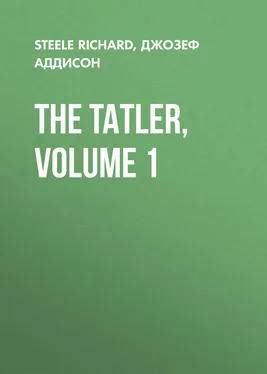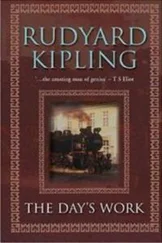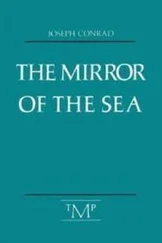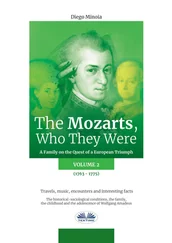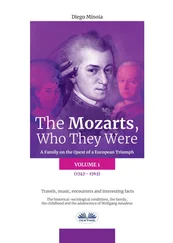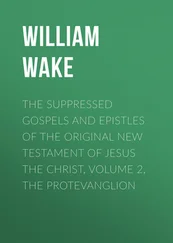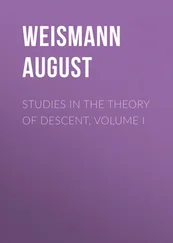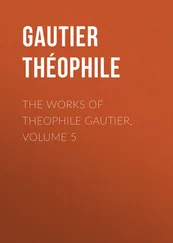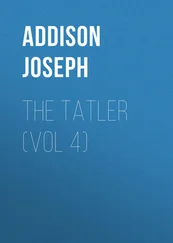Джозеф Аддисон - The Tatler, Volume 1
Здесь есть возможность читать онлайн «Джозеф Аддисон - The Tatler, Volume 1» — ознакомительный отрывок электронной книги совершенно бесплатно, а после прочтения отрывка купить полную версию. В некоторых случаях можно слушать аудио, скачать через торрент в формате fb2 и присутствует краткое содержание. Жанр: foreign_prose, foreign_antique, на английском языке. Описание произведения, (предисловие) а так же отзывы посетителей доступны на портале библиотеки ЛибКат.
- Название:The Tatler, Volume 1
- Автор:
- Жанр:
- Год:неизвестен
- ISBN:нет данных
- Рейтинг книги:4 / 5. Голосов: 1
-
Избранное:Добавить в избранное
- Отзывы:
-
Ваша оценка:
- 80
- 1
- 2
- 3
- 4
- 5
The Tatler, Volume 1: краткое содержание, описание и аннотация
Предлагаем к чтению аннотацию, описание, краткое содержание или предисловие (зависит от того, что написал сам автор книги «The Tatler, Volume 1»). Если вы не нашли необходимую информацию о книге — напишите в комментариях, мы постараемся отыскать её.
The Tatler, Volume 1 — читать онлайн ознакомительный отрывок
Ниже представлен текст книги, разбитый по страницам. Система сохранения места последней прочитанной страницы, позволяет с удобством читать онлайн бесплатно книгу «The Tatler, Volume 1», без необходимости каждый раз заново искать на чём Вы остановились. Поставьте закладку, и сможете в любой момент перейти на страницу, на которой закончили чтение.
Интервал:
Закладка:
Joseph Addison
The Tatler, Volume 1
Preface
The original numbers of the Tatler were reissued in two forms in 1710-11; one edition, in octavo, being published by subscription, while the other, in duodecimo, was for the general public. The present edition has been printed from a copy of the latter issue, which, as recorded on the title-page, was "revised and corrected by the Author"; but I have had by my side, for constant reference, a complete set of the folio sheets, containing the "Lucubrations of Isaac Bickerstaff" in the form in which they were first presented to the world. Scrupulous accuracy in the text has been aimed at, but the eccentricities of spelling—which were the printer's, not the author's—have not been preserved, and the punctuation has occasionally been corrected.
The first and the most valuable of the annotated editions of the Tatler was published by John Nichols and others in 1786, with notes by Dr. Percy, Bishop of Dromore, Dr. John Calder, and Dr. Pearce, Bishop of Rochester; and though these notes are often irrelevant and out of date, they contain an immense amount of information, and have been freely made use of by subsequent editors. I have endeavoured to preserve what is of value in the older editions, and to supplement it, as concisely as possible, by such further information as appeared desirable. The eighteenth-century diaries and letters published of late years have in many cases enabled me to throw light on passages which have hitherto been obscure, and sometimes useful illustrations have been found in the contemporary newspapers and periodicals.
The portraits of Steele, Addison, and Swift, the writers most associated with the Tatler, have been taken from contemporary engravings in the British Museum; and the imaginary portrait of Isaac Bickerstaff in the last volume is from a rare picture drawn by Lens in 1710 as a frontispiece to collections of the original folio numbers.
G. A. A.August 1898.
Introduction
When the first number of the Tatler appeared in 1709, Steele and Addison were about thirty-seven years of age, while Swift, then still counted among the Whigs, was more than four years their senior. Addison and Steele had been friends at the Charterhouse School and at Oxford, and though they had during the following years had varying experiences, their friendship had in no way lessened. Addison had been a fellow of his college, had gained the patronage of Charles Montague and Lord Somers, had made the grand tour, and published an account of his travels; had gained popularity by his poem "The Campaign," written in celebration of the victory at Blenheim; had been made an Under-Secretary of State, and finally (in December 1708) had been appointed secretary to Lord Wharton, the Lord Lieutenant of Ireland. Steele, on the other hand, had enlisted in the Guards, without taking any degree; had obtained an ensign's commission after dedicating to Lord Cutts a poem on Queen Mary's death; and had written a little book called "The Christian Hero," designed "to fix upon his own mind a strong impression of virtue and religion, in opposition to a stronger propensity towards unwarrantable pleasures." At the close of the same year (1701) he brought out a successful comedy, "The Funeral," which was followed by "The Lying Lover" and "The Tender Husband," plays which gave strong evidence of the influence of Jeremy Collier's attack on the immorality of the stage. "The Tender Husband" owed "many applauded strokes" to Addison, to whom it was dedicated by Steele, who wished "to show the esteem I have for you, and that I look upon my intimacy with you as one of the most valuable enjoyments of my life." In 1705 Steele married a lady with property in Barbados, and on her death married, in 1707, Mary Scurlock, the "dear Prue" to whom he addressed his well-known letters. For the rest, he had been made gentleman-waiter to Prince George of Denmark, and appointed Gazetteer, with a salary of £300, less a tax of £45 a year. He was disappointed in his hopes of obtaining the Under-Secretaryship vacated by Addison.
From 1705 onwards there is evidence of frequent and familiar intercourse between Swift and Addison and Steele. After Sir William Temple's death, Swift had become chaplain to the Earl of Berkeley, who gave him the living of Laracor; and during a visit to England in 1704 he had gained a position in the front rank of authors by the "Tale of a Tub" and the "Battle of the Books." At the close of 1707 he was again in England, charged with a mission to obtain for the Irish clergy the remission of First Fruits and Tenths already conceded to the English, and throughout 1708 what he calls "the triumvirate of Addison, Steele and me" were in constant communication. In that year Swift published a pamphlet called "A Project for the Advancement of Religion and the Reformation of Manners," which anticipated many of the arguments used in the Tatler and Spectator ; and he also commenced his attack on John Partridge, quack doctor and maker of astrological almanacs. On the appearance of Partridge's "Merlinus Liberatus" for 1708, Swift—borrowing a name from the signboard of a shoemaker—published "Predictions for the year 1708, wherein the month and day of the month are set down, the persons named, and the great actions and events of next year particularly related, as they will come to pass. Written to prevent the people of England from being further imposed on by vulgar almanack-makers. By Isaac Bickerstaff, Esq." Isaac Bickerstaff professed to be a true astrologer, disgusted at the lies told by impostors, and he said that he was willing to be hooted at as a cheat if his prophecies were not exactly fulfilled. His first prediction was that Partridge would die on the 29th of March; and on the 30th a second pamphlet was published, "The accomplishment of the first of Mr. Bickerstaff's Predictions … in a letter to a person of quality, in which a detailed account is given of Partridge's death, at five minutes after seven, by which it is clear that Mr. Bickerstaff was mistaken almost four hours in his calculation.... Whether he had been the cause of this poor man's death, as well as the predictor, may be very reasonably disputed." The joke was maintained by Swift and others in various pieces, and when Partridge, in his almanac for 1709, protested that he was still living, Swift replied, in "A Vindication of Isaac Bickerstaff, Esq.," which was advertised in the fifth number of the Tatler , that he could prove that Partridge was not alive; for no one living could have written such rubbish as the new almanac. In starting his new paper Steele assumed the name of the astrologer Isaac Bickerstaff, rendered famous by Swift, and made frequent use of Swift's leading idea. He himself summed up the controversy in the words, "if a man's art is gone, the man is gone, though his body still appear."
Much has been written on the interesting question of the early history of the periodical press; but with one exception none of its predecessors had much effect on the Tatler . John Dunton's Athenian Mercury was the forerunner of our Notes and Queries ; and it was followed by the British Apollo (1708-11), the second title of which was "Curious Amusements for the Ingenious. To which are added the most Material Occurrences, Foreign and Domestic. Performed by a Society of Gentlemen." The Gentleman's Journal of 1692-4, a monthly paper of poems and other miscellaneous matter, was succeeded, in 1707, by Oldmixon's Muses' Mercury; or, The Monthly Miscellany , a periodical which contained also notices of new plays and books, and numbered Steele among its contributors. Defoe's Review , begun in 1704, aimed at setting the affairs of Europe in a clearer light, regardless of party; but, added Defoe, "After our serious matters are over, we shall at the end of every paper present you with a little diversion, as anything occurs to make the world merry; and whether friend or foe, one party or another, if anything happens so scandalous as to require an open reproof, the world will meet with it there." Accordingly, of the eight pages in the first number, one and a half pages consist of "Mercure Scandale; or, Advice from the Scandalous Club, Translated out of French." The censure was to be of the actions of men, not of parties; and the design was to expose not persons but things. A monthly supplement, dealing with "the immediate subject then on the tongues of the town," was begun in September 1704; and pressure on the space before long pushed the Advices from the Scandal Club out of the ordinary issue of the Review . Subsequently Defoe wrote more than once in praise of the way in which his work had been taken up by Isaac Bickerstaff.
Читать дальшеИнтервал:
Закладка:
Похожие книги на «The Tatler, Volume 1»
Представляем Вашему вниманию похожие книги на «The Tatler, Volume 1» списком для выбора. Мы отобрали схожую по названию и смыслу литературу в надежде предоставить читателям больше вариантов отыскать новые, интересные, ещё непрочитанные произведения.
Обсуждение, отзывы о книге «The Tatler, Volume 1» и просто собственные мнения читателей. Оставьте ваши комментарии, напишите, что Вы думаете о произведении, его смысле или главных героях. Укажите что конкретно понравилось, а что нет, и почему Вы так считаете.
